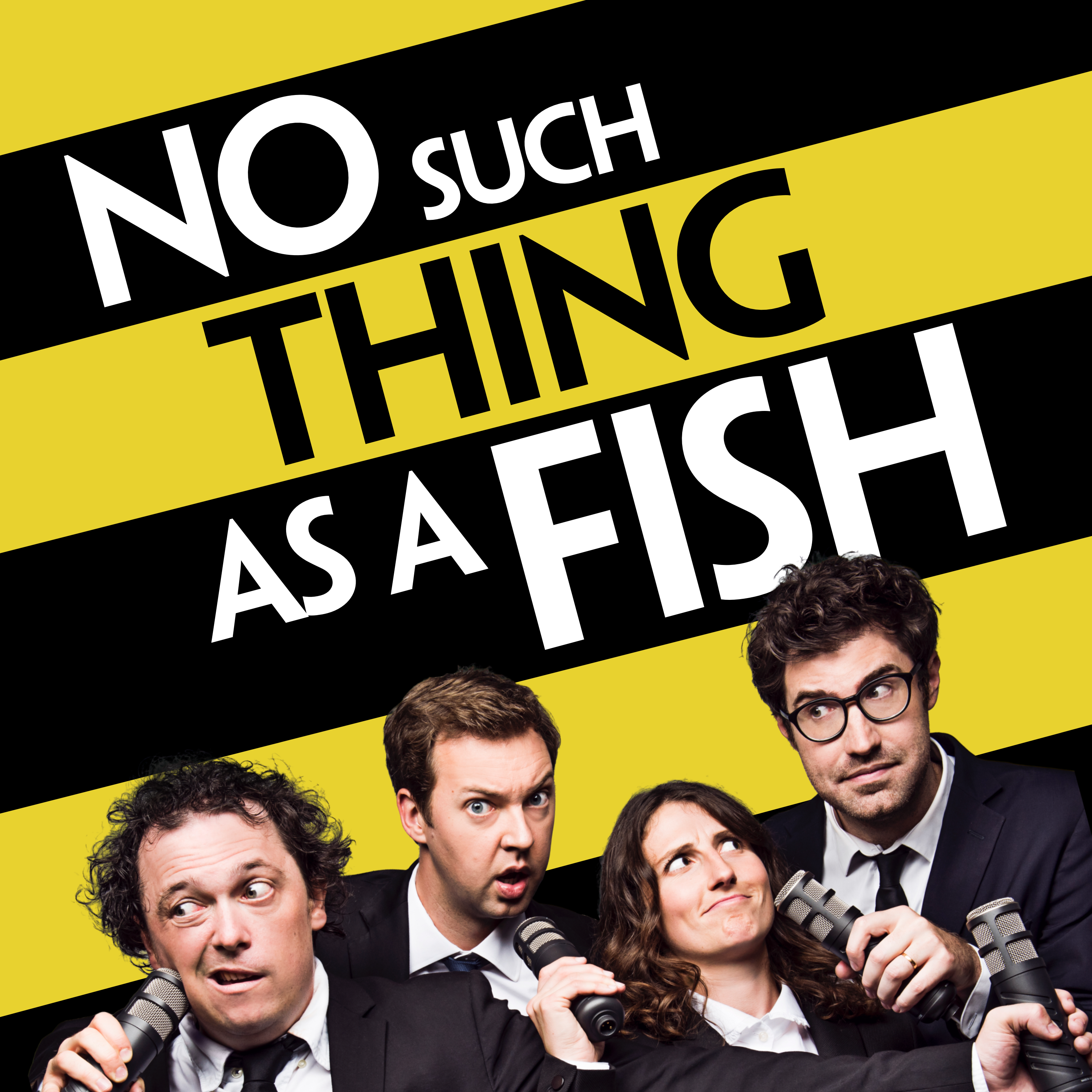
Piano, finally
Piano Finally is a podcast by an old bloke who is learning the piano, finally. I cover the process of learning the piano and music theory as an adult learner. I also review piano books, hardware and other materials from an adult learner's perspective.
Piano, finally
Episode 62 - Why are we playing?
🎙 Episode 62 – Why Are We Playing?
G’day and welcome back to Piano, Finally. This week included two very different performances: Circa and the Art of the Fugue at City Recital Hall, and Radio Luxembourg at The Joan in Penrith. Both highlighted the power of live music, from Bach’s intricate counterpoint to the raw energy of 1960s rock and pop.
🎭 Performance Reviews
- Circa and the Art of the Fugue combined the Australian Brandenburg Orchestra with contemporary circus from Circa. Historically informed Baroque met modern dance—plus some spectacular floor rolling. A unique experience worth catching in Melbourne. More info
- Radio Luxembourg featured John Waters, Stewart D’Arrietta and the Chartbusters. It’s a trip through the British invasion, with music from The Rolling Stones, The Kinks, The Troggs and more. Great fun and beautifully played. Radio Luxembourg Live
📝 Essay – Why Are We Playing?
Both concerts raised a bigger question: why do we play music? The Brandenburg players acted as messengers for Bach’s intent, while the rock band communicated their personal connection to the songs. For amateurs like me, the “why” often comes down to enjoyment. We practise, persevere, and share music not for a paycheque, but for the joy of saying, this piece means something to me, and I want to share it with you.
🎹 Gear Review – Adam D3V Monitor Speakers & K&M 18807 Holders
Thanks to a video by DSoundman, I’ve upgraded the Nord Stage 4 setup with Adam D3V speakers mounted on K&M 18807 holders. The sound is a huge improvement, and the speakers sit right where they should—making practice far more enjoyable.
🎼 Progress
This week I’ve circled back to four older pieces: Spindler’s Canon, Türk’s Bagatelle in F, and Andrew Craggs’s Afternoon Snooze and Blackout Blues. All recorded on the Kawai NV10 through Pianoteq 8 on Cubase, emulating the Shigeru Kawai SK-EX grand.
You can contact me:
- via email at david@pianofinally.show; this is probably the best option
- the show website, www.pianofinally.show
- Instagram and Threads @pianofinally
- and on YouTube
- all the podcast directories - list
- here's the RSS feed
Some of the links to books and other items mentioned in the podcast may affiliate links for Amazon or other providers. If you use one of these links, a commission may be paid to me at no additional cost to you. Thank you if you use a link.
All reviews of products, websites and services are unpaid, and no sponsorship has been received for any content on this podcast.
G'day everyone, I'm David Reedy. Welcome to Piano, Finally, a podcast by an old bloke who's getting around to learning the piano, finally. Welcome to show number 62. Thank you very much for listening. If this is the first time you're hearing the podcast, I hope you enjoy what's in the show. If you're back for another episode, then thanks for returning. If you too are learning a musical instrument, let me know how you're going with it. You can contact me at david at pianofinally.show It's been a musical week. I got to two performances, Circa and the Art of the Fugue on Friday night at the City Recital Hall and Radio Luxembourg at the Joan in Penrith on Saturday night. Circa and the Art of the Fugue is a collaboration between an acrobatics group and the Australian Brandenburg Orchestra. Circa is a performing arts company based in Meanjin, Brisbane, that tours the world performing a new form of circus. The Australian Brandenburg Orchestra has been around since 1990 and is Australia's Baroque music flagship. They use authentic instruments with an historically informed performance style. Radio Luxembourg is a show performed by John Waters with Stewart D’Arrietta and the Chartbusters. The evening is a collection of hits from the 1960s, covering the British pop invasion of the US charts. I have finally completed the setup of the Nord Stage 4 I bought earlier this year. I have been using the Nord through one of the sets of monitor speakers I have on the computer that I use to make this podcast, but it wasn't the perfect situation. The computer speakers were behind me and a couple of metres away, and it worked, but I was sure there was better. Nord makes a set of speakers for the Stage 4, but they are unavailable, and no one seems to know exactly when they will be in stock, so I started looking for alternatives. About that time, D Soundman put a video up on YouTube in which he attached a pair of small monitor speakers to the König & Meyer stand on which he has his Nord Stage 4. It just so happens I have the same König & Meyer stand. The speakers that Douglas used in the video were the Adam D3V monitor speakers. These are 3.5 inch active speakers that can use either USB-C or TRS audio connections. They have passive radiators on the side to extend the bass down to 45Hz. The speakers come with a pair of slide-on stands to sit them at a slight upward angle if you want to put them on a desk, but more importantly for my purposes, they have a standard 3 8th inch mounting point on the bottom, meaning they will attach simply and securely to a stand. Getting the speakers was relatively simple. Adam's speakers are widely available and my regular shops had them in stock. König & Meyer make a large range of accessories for their stands and so it's not hard to find parts for specific purposes. There are a number of ways to add a separate stand for a speaker, but the one I chose was to use their part number 18807. This holder attaches to the legs of the stand and extends forwards or backwards at a 45 degree angle. It's adjustable both in distance and height, and has a 3 8 inch fitting on the end, perfect for the speakers. Of course, you need two of them, and although K&M's items are very high quality, they're reasonably expensive. Price wasn't a problem though, getting two of them was. Turramurra Music, where I bought my stand in the first place, had one in stock and was able to order a second one from the supplier. All was going well until the supplier let them know that it would be five or six months before they had them back in stock. No one else in Australia had them at all and neither did anywhere else. I did eventually track down one from a small store in the United States and it arrived the other day. The mount's attached to the stand in a few minutes and they hold the two speakers in pretty much exactly the right spot for when I'm sitting at the keyboard. The sound is great. The Adam speakers can go to 240 watts but I don't need them turned up anywhere near that loud. They make the Nord sound much better than it did when using the further away speakers. Clearly the same setup can be used with any keyboard. You don't even need the K&M stand. The mounting point on the speakers means I'll fit mic stands as well. Although they're not cheap, the combination of speakers and mounts has really improved the sound of the Nord and my enjoyment playing it. Normally I mention the performances I've seen during the week at the end of the episode, but this week I'm going to review them now for reasons that will become clear later in the podcast. Circa and the Art of the Fugue was a very interesting evening. The Australian Brandenburg Orchestra had just five of their musicians in the production, a cellist, a viola player, a violinist, one person who swapped between a violin and a viola for different pieces, and Paul Dyer who played a harpsichord for most of the performance and a chamber organ at the end. The dancers performed throughout the 90 minutes with feats of strength and balance and modern dance moves. I have a friend whose daughter is a dancer and the running joke we have is that modern dance must involve rolling around on the floor. There was a fair bit of rolling. That's how I know it was modern dance. It was a really great night at the Sydney Recital Hall which must be by far the easiest of all Sydney's performance spaces to get to being a two-minute walk from Wynyard train station. If you get a chance to see the performance and you like Bach I would recommend it. It's heading to Melbourne in the coming weeks. Radio Luxembourg at the Joan on Saturday night was a fun night. My seat was in the very middle of the front row, so my eyes were level with the band members' feet. It was nice and close, and not too loud, although the noise warning on my watch tapped my wrist after the first minute or so. Radio Luxembourg gets its name from the situation in Britain in the 1950s and 60s when there were no commercial radio licences and the BBC didn't play very much rock or pop music. A commercial station in the Duchy of Luxembourg had an English language service and they began playing British and US rock and pop every evening. This was how many British teens, including the lead singer John Waters, got to listen to their music. John was joined by Stewart D’Arrietta and the Chartbusters to play a selection of the music from that era. Stuart was on keyboards and some lead vocals, with a drummer, bass guitarist, electric guitarist, and acoustic guitarist making up the rest of the band. I was amongst the younger members of the audience, and I think that the audience overall was a little more sedate than they would have been at the time. All the music was well known, performed excellently, and it was really clear that both the performers and the audience were having a good time. If you like the early work of the Rolling Stones, the Kinks, the Trogs and other bands of the 60s, then Radio Luxembourg is well worth a listen. There's a link in the show notes to their website which lists upcoming performance dates and has a couple of trailer videos too. Essay, Why Are We Playing? On Friday and Saturday, I was at two very different musical events. One was based around the Baroque music of Johann Sebastian Bach, and the other around the British pop and rock bands of the 1960s. Clearly, there was much they had in common, despite there being 200 years difference in the musical styles. Both were played on period-appropriate instruments, violins and harpsichord on one hand, electric guitars and synthesizers on the other. In most cases, the music was composed by its original performer, and then interpreted by many others, and the music theory behind all the pieces has barely changed. Yet, they were very different experiences, and highlight the very different ways there are of approaching musical performances. Music is about communication, and so the difference in the performances will probably have something to do with the differences in the intent behind that communication. With Circa and the Art of the Fugue, the musical part of the performance was very deliberately arranged to communicate the ideas that Bach had incorporated into the work. The performance was on instruments that Bach would have been familiar with. I don't know what tuning the Australian Brandenburg Orchestra was using, but given that they employ performance techniques informed by period-appropriate practices, I would expect that it would not have shocked Johan. The performers used their years of study and skills to ensure that they were as close to Bach's meaning as possible, so they were intent on getting out of the way and letting the original message come through. In theory, an equally skilled group of performers with the same intent should result in a very similar performance. There was one flourish that I didn't think is in the score, though. The last four notes in the piece, which are also the last four notes Bach ever wrote, are B flat, A, C and B, which in the German notation of the time spells B-A-C-H. They were played loudly solo on the chamber organ before all the stage lights blinked out. It was a great end to what had been a stunning performance and a valid interpretation of Bach's last work. So what were the performers communicating? In this case, they were acting more as the messengers. faithfully transmitting Bach's ideas. It was the dancers who were also part of the performance that got to send their own messages. The messaging in Radio Luxembourg was both similar to and different from the Bach performance. In this case, the music was still someone else's. The messages intended by Mick Jagger and Keith Richards or Barry Gibb were still in the words and melodies but the interpretation of them was in the hands and voices of the six performers. Before most of the numbers, John Waters would introduce the piece, maybe speak a little about its origin, and then explain its significance both to music in general and to the band. They then performed the piece with their own spin, with different instrumentation from the original, communicating their relationship with the song. By the end of the performance, I had a much better idea of what John, Stuart and the others thought and felt about the music, and how it had influenced them, than I had about the the Australian Brandenburg Orchestra feel about Bach. I think this was the biggest difference in the performances. In one case it's, let me tell you what was said, and the other is, let me tell you what this means to me. Both are equally valid, and both were completely appropriate for the performances. However, I felt that the rockers were enjoying themselves more than the Baroque players, at least from what I could see. I'm sure the Brandenburg players were enjoying themselves, using their skills to create an exceptional performance, but the rockers were able to show their enjoyment much more viscerally. Both concerts were fantastic, but it got me thinking about why I play music. At this stage in my journey with the piano, I am very much concentrating on getting the notes and everything else correct. I'm not trying to find deep meanings in the 24-bar pieces that I've been playing. I'm very much at the this is what was written and this is what it sounds like stage. I've only made one minor change to any of the music in the last 18 months, and that was just to slow the tempo of one piece because I think it sounds more relaxed when played a bit slower than indicated. I don't want to just stay a messenger of the composer's intent forever though. I've said before that one of the reasons for learning to play the piano is to spread enjoyment, and that is likely to be with music that I enjoy. In some cases, that's going to mean my version of someone else's music. If I'm going to learn pieces that are suitable for more informal settings than a piano concert, I will likely have to find some pieces that are more popular. I have a soft spot for late 70s synth pop, so I intend to find some of that music to play once I get proficient enough to give it a decent go. They're going to have to be my versions, unless I can find a band of like-minded beginners. I want to communicate my enjoyment of the music. I think this is the case for most amateur musicians Professional musicians get paid And while I'm sure that they mostly enjoy their work I'm sure there are times when it is just a job And they would prefer to be back home Not so for the amateur We put in the hours of practice Put up with some of the tedious exercises To get to the point where we can share our music with our audience This piece of music means something to me and I hope it will mean something to you too. But even if it doesn't, it's still something I want to say. One small advantage that those of us learning for pleasure get to have over the professional musician is that we get to choose our why. No more performances this week, but that doesn't mean that there is nothing happening. Next Friday is the school's annual winter sleepout. part of the social justice program we have, in this case, to raise money for an awareness of homelessness in the local area. Over the past couple of weeks, overnight temperatures have been below 5 degrees Celsius, so it's likely to be a bit chilly. But I suppose that's the point. There is normally some music and other activities during the evening. I'll let you know how it goes next week. If you'd like to contact me, email is the best way. You'll find me at david at piano finally and the website at www.pianofinally.show. In both cases, Piano, Finally is all one word. The show is also on Spotify and available as audio only on YouTube. You can subscribe via any popular iOS or Android podcast application or from directories such as Apple Podcasts, Spotify or YouTube. I also post an excerpt and link of each episode as an Instagram Reel. If you're learning an instrument, let me know where you are in your journey. What's going well? When do you fit your practice in? What are the challenges? And so, until next week, I hope your piano stays in tune and you enjoy your time at the keys. This week, I'm back with the four older pieces. During my lesson last Monday, Devi and I were talking about the upcoming showcase and what piece or pieces I would like to play. My first choice is Wild Chase by Wynn-Anne Rossi, but it's not quite there yet, although I am still practicing it. The fallback position is the four older pieces I've been playing for a while. I haven't been practicing them much, and when I went to play any of them other than the Spindler Canon, they weren't the best, so this week I went back to concentrating on them. So, this week the pieces are Canon by Fritz Spindler, Bagatelle & F by Daniel Gottlob-Türk, Afternoon Snooze and Blackout Blues, both by Andrew Craggs. All the pieces were recorded using the Kawai NV10 as the keyboard, and Pianoteq 8 via Cubase on the M4 Pro Mac Mini, emulating the Shigeru Kawai SK-EX Grand Piano.. Thank you. you
Podcasts we love
Check out these other fine podcasts recommended by us, not an algorithm.

Connected
Relay
Upgrade
Relay
No Such Thing As A Fish
No Such Thing As A Fish
We Can Be Weirdos
Global
Stuff The British Stole
ABC and CBC
The iDeveloper Podcast
Steve Scott (Scotty) & John FoxRaven On: A Pop Culture Podcast
Natalie Bochenski & Stuart Layt
Smart Enough to Know Better
Dan Beeston & Greg Wah
TopMusic Piano Podcast
Tim Topham
The Chopin Podcast
Garrick Ohlsson and Ben Laude

